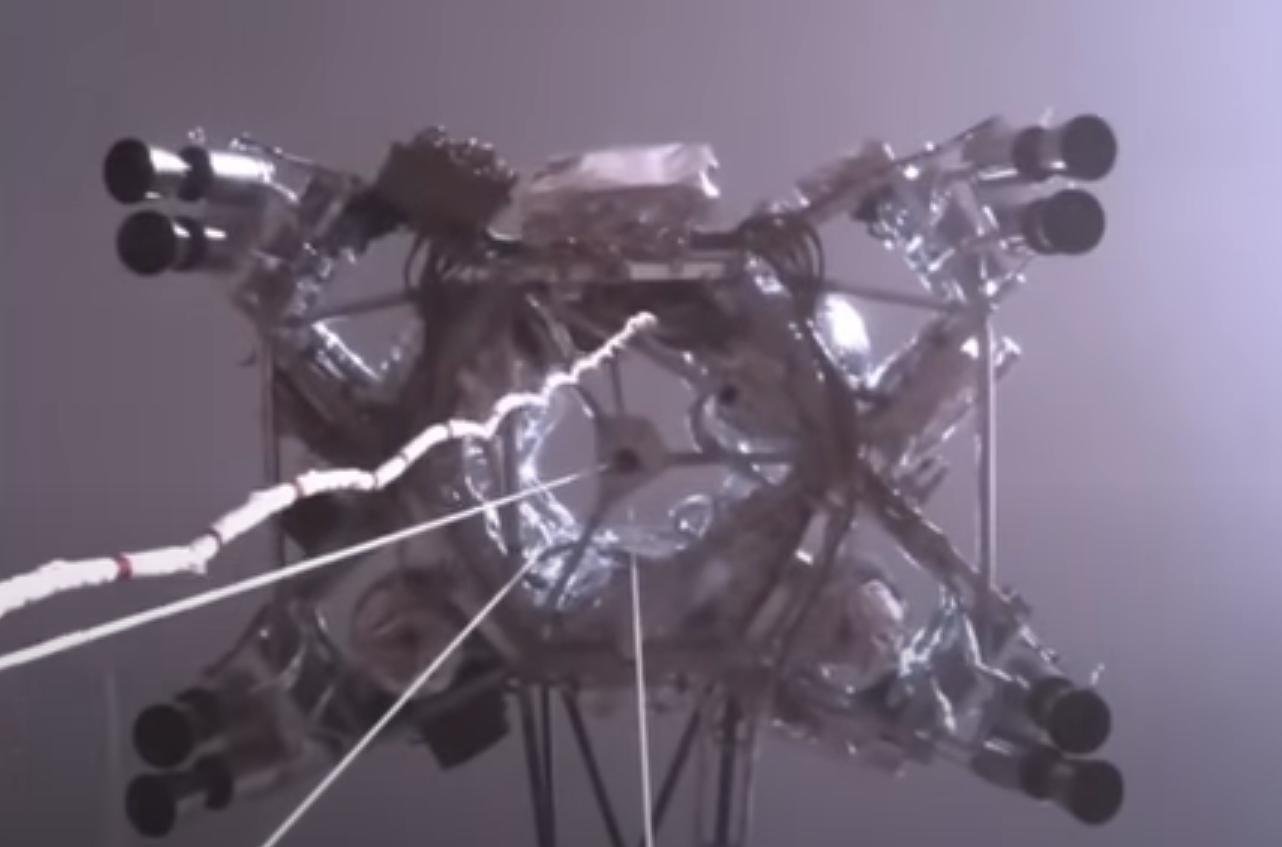It would be rather surprising if the exhaust from these engines was visible. The engines use hydrazine ($\mathrm{N_2 H_4}$) monopropellant, and the reactions involved (catalysed by iridium) are
$$
\begin{aligned}
\mathrm{N_2 H_4} &\rightarrow \mathrm{N_2 + 2H_2} &&\text{exothermic}\\
\mathrm{3N_2 H_4} &\rightarrow \mathrm{4NH_3 + N_2} &&\text{very exothermic, $\mathrm{NH_3}$ is ammonia}\\
\mathrm{4NH_3 + N_2H_4} &\rightarrow\mathrm{3N_2 + 8H_2} &&\text{endothermic, makes more gas}
\end{aligned}
$$
So there are two important things here: firstly these reactions are catalysed: hydrazine decomposes like this only in the presence of an iridium catalyst; and secondly the products of these reactions are colourless gases: hydrogen, and nitrogen, probably some ammonia and probably some unconsumed hydrazine.
We also know, from this paper (that copy wants you to pay for it, but there is a free copy here), that the exit temperature for MSL (aka Curiosity, same landing system presumably slightly lower thrust though), is about $217\,\mathrm{K}$. That's $-56^{\circ}\mathrm{C}$. If you put your hand in the plume you're going to freeze (and probably have all the skin removed from it since the exit velocity is extremely supersonic). In fact I think that the plume temperature is lower than the ambient temperature at the time of landing.
The reason it's cold is some combination of the last, endothermic, reaction, and the adiabatic expansion of the gases as they leave the engine, I think.
So we can put all of this together:
(1) The reactions take place in the presence of an iridium catalyst, which is inside the engines. This means in particular that all of the exothermic reactions are taking place inside the engine (and presumably a lot of the heat produces is then going to drive the endothermic reactions). And, indeed, parts of the engines get very hot and you can see this. The exhaust products are not still reacting because they're not near the catalyst any more.
(2) The reaction products are colourless gases. There's no soot or other awful crud from partial combustion as you get with, say, kerosene rocket engines. There may be some small amount of crud which has come from the inside of the engine, but if the engines are working well this will be a tiny amount of material.
(3) The exhaust plume is cold: tens of degrees below the freezing point of water.
So what you are looking at is a plume of colourless gases at a temperature somewhat below ambient. And, not surprisingly, you can't see it.
In fact, I'd expect that the best chance of seeing the plumes would be to see any residual ammonia and hydrazine condensing in them. I presume that the engines burn cleanly enough that not enough of these is getting into the plume to be visible.
One interesting thing is that I would expect that, on Earth, plumes from these engines probably would be visible. I'd expect this because a plume of very cold gas would rapidly mix with the air, and a lot of water vapour in the air would condense out in the now-much-colder mixture. So you'd get 'vapour trails' – plumes of, not water vapour, but an aerosol condensed from water vapour, or in other words fog. This doesn't happen on Mars because the atmosphere is extremely dry compared to Earth's.
As a note: this question is clearly at least tangentially related to yet another 'we didn't go to x' conspiracy theory. How likely does it seem that, if people were to stage such an imagined conspiracy, they would forget to put the nice bright rocket plumes on their faked footage? Because, to me, it seems not likely at all.

